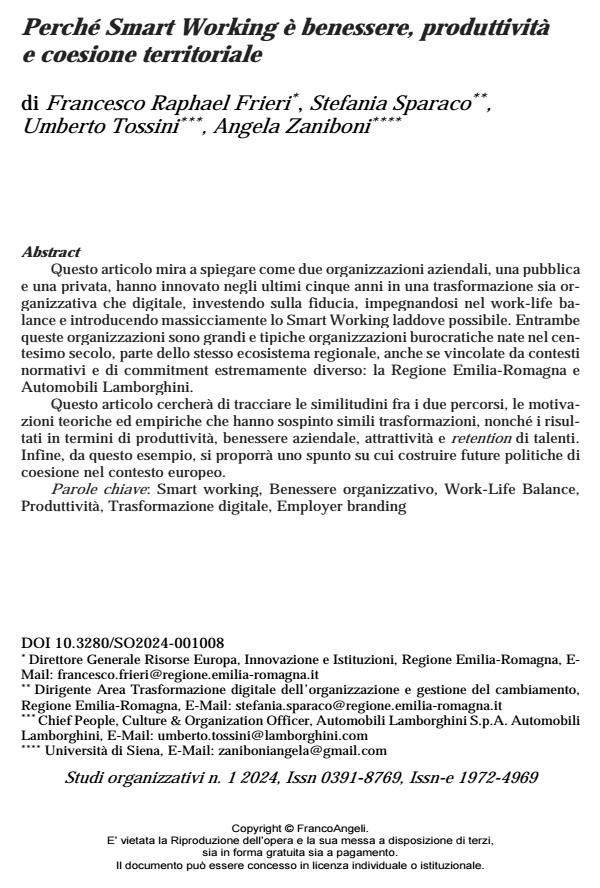Why Smart Working is Well-being, Productivity, and Territorial Cohesion
Journal title STUDI ORGANIZZATIVI
Author/s Francesco Raphael Frieri, Stefania Sparaco, Umberto Tossini, Angela Zaniboni
Publishing Year 2024 Issue 2024/1
Language Italian Pages 20 P. 166-185 File size 166 KB
DOI 10.3280/SO2024-001008
DOI is like a bar code for intellectual property: to have more infomation
click here
Below, you can see the article first page
If you want to buy this article in PDF format, you can do it, following the instructions to buy download credits

FrancoAngeli is member of Publishers International Linking Association, Inc (PILA), a not-for-profit association which run the CrossRef service enabling links to and from online scholarly content.
This article aims to explain how two organizational entities, one public and one private, have innovated over the last five years in both organizational and digital transformation, investing in trust, committing to work-life balance, and massively introducing Smart Working where possible. Both of these organizations are large and typical bureaucratic organizations born in the twentieth century, part of the same regional ecosystem, although bound by extremely different regulatory and commitment contexts: the Emilia-Romagna Region and Automobili Lambor-ghini. This article will attempt to trace the similarities between the two paths, the theoretical and empirical motivations that have driven similar transformations, as well as the results in terms of productivity, corporate well-being, attractiveness, and talent retention. Finally, from this example, it will propose an insight on which to build future cohesion policies in the European context.
Keywords: Smart Working, Organizational Well-being, Work-Life Balance, Productivity, Digital Transformation, Employer Branding
Francesco Raphael Frieri, Stefania Sparaco, Umberto Tossini, Angela Zaniboni, Perché Smart Working è benessere, produttività e coesione territoriale in "STUDI ORGANIZZATIVI " 1/2024, pp 166-185, DOI: 10.3280/SO2024-001008